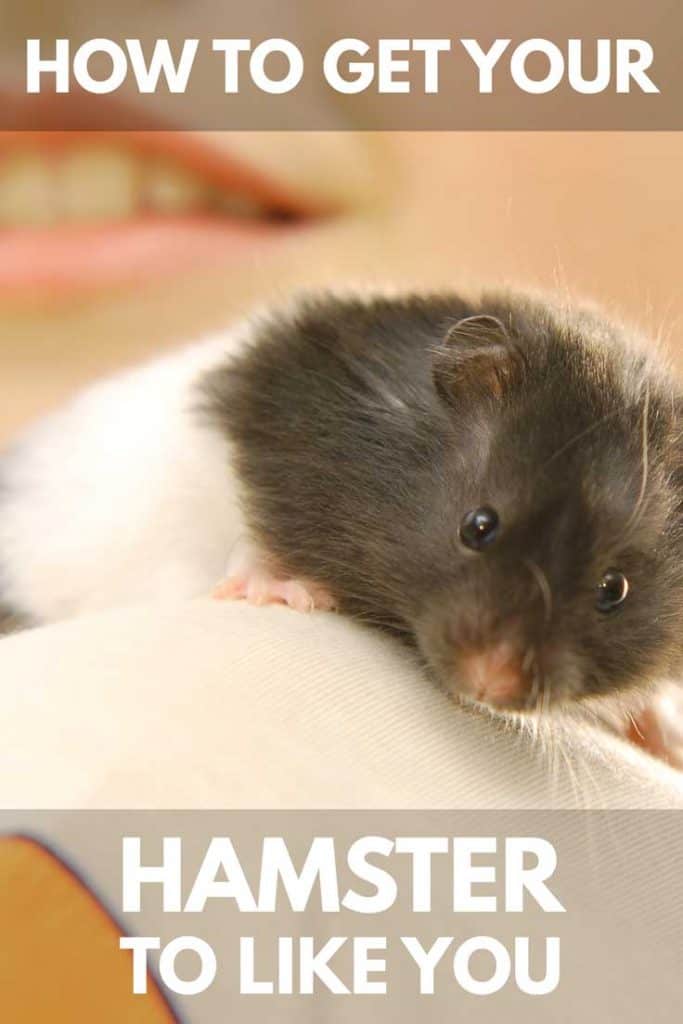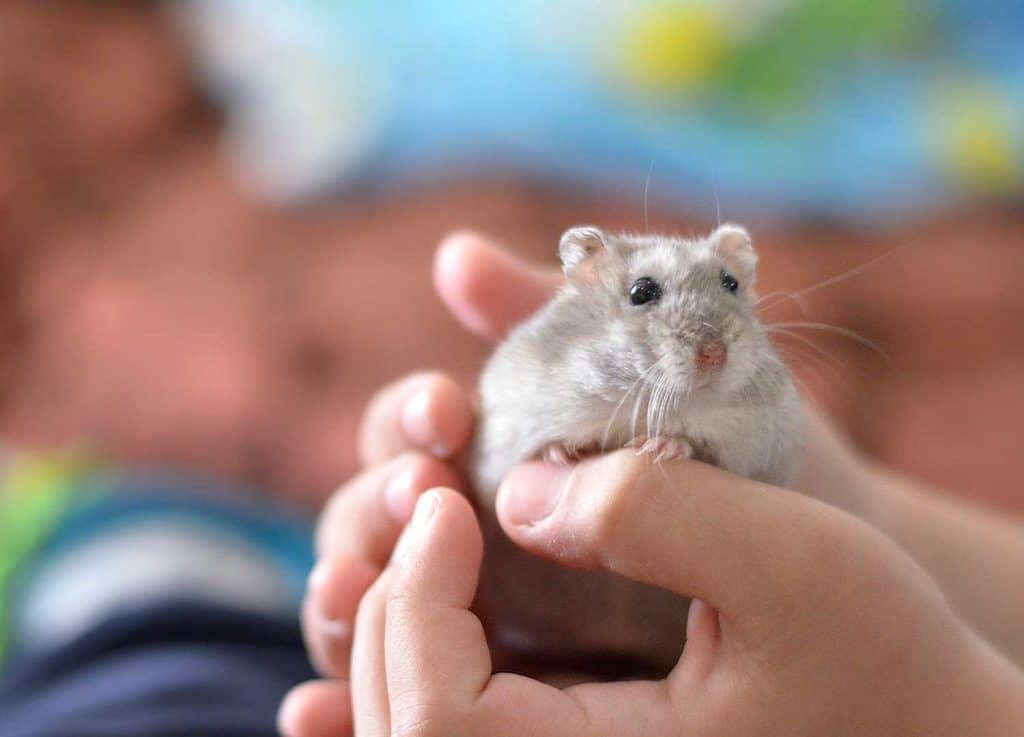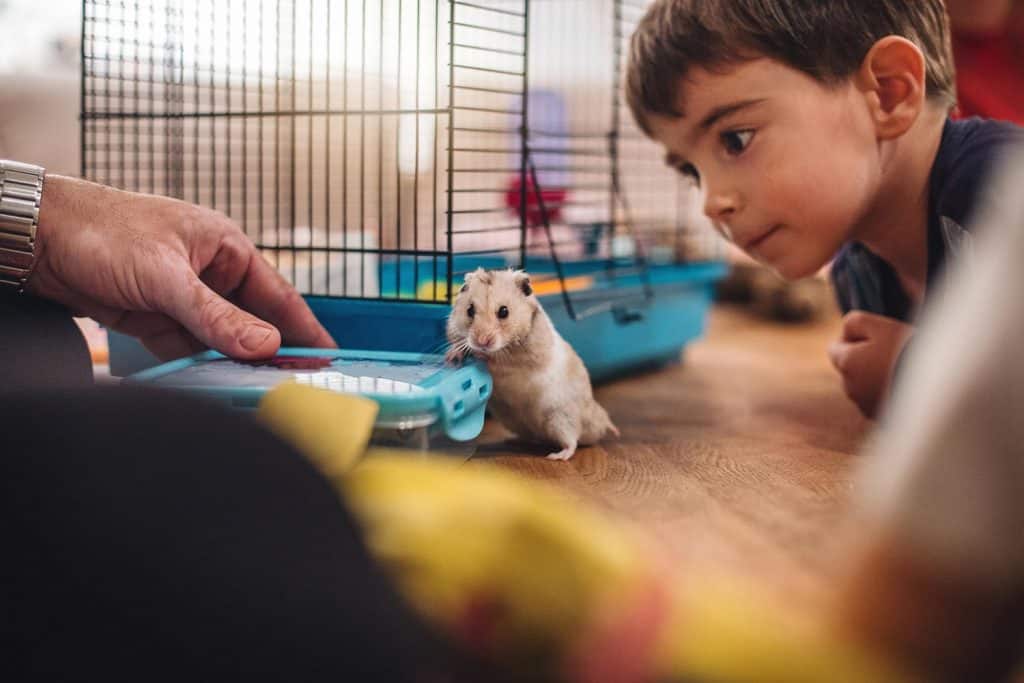Every hamster owner wants their hamster to like them. But hamsters tend to be a little bit more standoffish than your average pet. This makes forming a relationship more difficult, but I’ve done some research and found a method that’ll make it easier.
 Getting a hamster to like you is about making them feel comfortable; letting them familiarize themselves with your scent, their new environment, and the sounds/people inside that environment. You can increase the likelihood of them liking you by taking them through the following taming lessons. These taming lessons, which will make them more receptive to being held and pet by you, will be broken down into four different parts:
Getting a hamster to like you is about making them feel comfortable; letting them familiarize themselves with your scent, their new environment, and the sounds/people inside that environment. You can increase the likelihood of them liking you by taking them through the following taming lessons. These taming lessons, which will make them more receptive to being held and pet by you, will be broken down into four different parts:
- Holding Your Hamster: introducing them to a play tub and trying to entice them into your hand with yummy treats.
- Establishing Trust: gaining their trust by showing them a game that you can enjoy for years to come.
- Reaffirming Your Progress: practicing all the things you learn from the first two parts.
- Having Fun with Your Hamster: enjoying the relationship the taming lessons have created with a playing session inside a giant playpen!
The taming lessons are a little more elaborate than the snippets I provided above. But if you read on, you’ll see how each lesson can help create an incredible relationship between you and your hamster!
A Guide to Taming Your Hamster
Before we begin, we must discuss a few disclaimers that might make these steps less effective than intended:
- Not every hamster is the same. They all have different personalities, so some of them might never be friendly. Which is why if your hamster doesn’t cooperate, it’s best you don’t force the issue.
- Your hamster’s age matters to this process. The older your hamster is, the harder it will be to tame them. An older hamster might be set in their ways
- The place where you bought your hamster might affect the results as well. A hamster from an ethical breeder will have a lot of experience with socialization and be more open to being tamed. Hamsters from pet stores, backyard breeders, or Craigslist will typically be a lot more standoffish and fight the process.
These factors don’t mean these steps won’t be effective. It’s just a general heads up that some hamsters won’t take kindly to the training. And we want these little furballs to be as comfortable as possible in their homes!
Bringing the Hamster Home
If you’re confident your hamster’s used to your scent, you can jump down to the “Taming Lesson” section. But for you newbies, the things you do in the first couple of days can have a vast impact on your relationship with your hamster.

The following actions will help cultivate an environment where your new hamster feels comfortable:
- When first bringing them home, resist the urge to try and play with them. Hamsters are timid and fickle creatures that’ll need to get familiar with their new homes. If you come on too strong, you’ll end up scaring them and hurt the chances a relationship will ever form.
- For the first few days, leave the hamster alone in its cage. The new environment will cause them enough stress; they don’t need you messing with them during this transition period.
- Around the fourth or fifth day, try introducing a tissue with your scent on it. This will sound weird, but put a tissue inside your sock for a few hours; it will effectively get your scent onto the tissue. Then, place it inside the cage and get your hamster comfortable with your smell. Sounds gross, but it will help your hamster get used to your presence in their lives.
- Continue giving your hamster a new tissue with your scent on it every day: the more exposure to your scent through indirect contact, the better. It will reduce the risk of your hamster biting you when the taming lessons start.
- During the time you’re introducing the scented tissues, try hand-feeding your hamster treats. I’d recommend giving them some vegetables such as carrots, broccoli, cauliflower, or even squash.
Once you have them eating out your hand, it’s time to move onto the taming lessons. This entire process typically takes up to five days; however, it can either be longer or shorter depending on your hamster personality.
Be sure to keep these lessons at a pace that your hamster is comfortable with rather than forcing the issue. You must also refrain from getting too stressed out by the process; your hamster will feel your anxiousness and become anxious themselves.
Nature: A hamster's innate temperament
Just like us humans, hamsters have their own innate character that they're born with. Genetics is at play here, offering a range of behavioral tendencies in every creature - hamsters included.
In other words, some hamsters are simply born friendlier than others.
When you first get a hamster, it can be very difficult to assess the critter's innate nature. Most people buy a hamster at the pet store or adopt one from a friend or an online ad. They don't really stop to choose or assess that hamster's "personality.
Even if you wanted to, more often than not, you had very little time to watch the hamster's behavior in his or her previous home.
Nurture: how socialization affects a hamster's level of friendliness
Socialization - or lack of it - provides an additional layer to a hamster's temperament and level of friendliness. What that word means is the amount of time a hamster spent interacting with humans while it was a young pup. Or just throughout its lifetime.

The hamsters you buy from the store are often lacking in that department. Born in "hamster mills" or just accidental breeding at home, they received poor handling as pups. They get even less human interaction while at the store. The end result is that these hamsters are usually at least somewhat shy of people.
That doesn't mean you can't win them over. You can - but you'll have to spend time building that connection with them.
Taming Lessons For Your Hamster And You
The materials you’ll need for the following steps are a hamster ball, a small cup, a play tub, and a playpen. Once you have all these supplies at your disposal, you can start building a bonding relationship with your hamster!
Day 1: Holding Your Hamster
The goal of day 1 is rather simple: get your hamster comfortable with the idea of you holding them and hopefully crawling all over your hands!
- Place the hamster ball next to the cage’s door and let your hamster find their way inside. Don’t force them into the ball. Let them do it on their own, which might take a little bit of time.
- Place the ball inside the play tub and let your hamster explore the new surroundings. Your hamster may seem a little puzzled at first, but they’ll eventually get used to the play tub.
- It’s time your bribe your hamster with some yummy treats. Open both your hands up together with a little piece of carrot or another vegetable in your palm. Lay your hands on the bottom of the play tub.
- Your hamster will likely be standoffish at first. But soon they won’t be able to resist the yummy treat. They’ll adventure on into your hands and start eating within your palm. Remaining calm during this portion of the lesson is key to establishing a bond. If you’re anxious that’ll your hamster might bite you, they’ll become anxious too.
- After they’re finished eating, your hamster should start running around with your hand. This amount of progress is enough for the first day and is an excellent place to stop. Put the hamster ball back into the tub and let your hamster climb themselves into it.
- Return your hamster back to their cage using the hamster ball. Hold the hamster ball up to the cage’s door and when they’re inside give them a treat.
Day 2: Establishing Trust
Day 2 is all about building a certain level of trust between you and your hamster. For the following steps, you’ll need the small cup I referenced above. If you don’t have a small cup, I recommend using a detergent lid as I’ve found these to be an excellent alternative.
- Repeat all the steps you did during day 1. It'll help bring a little routine to the lessons and establish a sense of comfortability.
- Introduce the small cup as another place to explore. Try to entice your hamster into the cup.
- Once your hamster’s inside, gently lift the cup a little bit off the ground. With the other hand, form a bridge your hamster can use to jump off and reach the bottom of the tub.
- After a few successful turns, your hamster will start climbing into the cup just to jump off your hand. It will soon become a game between you and your hamster. The development of this game is a sign that trust has begun developing!
- Continue the game until your hamster becomes tired and hungry. Use the hamster ball and return them to their cage. Give them a treat to reward their progress and let them relax until the next lesson.
Days 3+4: Reaffirming Your Progress
There are no new steps to go through during days 3 and 4. Instead, practice the routines your hamster learned during day 1 and day 2. This will help ensure that your hamster’s ready to move onto the last day in our taming lessons.
Day 5: Having Fun With Your Hamster
The last step is easily the best one. You’ll finally get to truly play with your hamster inside a playpen big enough for both of you!

- Step up the playpen and have it ready for your hamster’s arrival. Make sure there’s nowhere your hamster could squeeze through and escape.
- Bring your hamster over to the playpen inside their hamster ball. Sit down inside the playpen in a crossed-legged position. Make a large bridge with both your hands as you did during the small cup exercise.
- Your hamster might not come out of their ball at first. Be patient and let them come out at their own speed. When they do come out, let your hamster explore and do whatever it wants to do.
- Your hamster will start crawling all over you, and the friendly relationship you’d envisioned has finally been created.
- Once you’re both satisfied with the experience, return them to their cage using their hamster ball. Give them a yummy treat and proceed to use the playpen whenever you see fit!
How to Build a Hamster Playpen
I realize a lot of you are wondering how in the world do I set up a playpen big enough for both my hamster and me? Well, it’s actually not that difficult. In fact, here’s an incredible Youtube video that demonstrates a very creative way of creating your own playpen.
But I do recommend putting down some newspaper inside the playpen just in case your hamster needs to relieve themselves. The video weirdly left this part of the process out. It could awfully messy without it.
With this video and the lessons above, I’m quite confident you and hamster will be on your way to building an incredible relationship. But remember, if your hamster isn’t receptive to the lessons, don’t try and force them.
It might not be in their personality to be friendly with their owners, which is entirely okay. If this is the case for you, try and be there for them in whatever way that makes them feel comfortable.
Can any hamster become friendly through taming?
Unfortunately no.
Whether it's the temperament they were born with or lack of early-age socialization doesn't really matter. Some hamsters may never actually display anything remotely close to affection towards their owner. At best, they'll learn to accept your presence in their life and avoid biting you when you try to pick them up. They'll still make it clear they prefer to be left on their own.
So, what do you do then?
You accept your hamster for who he or she is. They may be tiny in size but they do have their own personality and we need to respect that. Adopting a hamster comes with a full commitment on our part to care for that pet for as long as they live. Whether or not you get them to like you.
.




Hello! I got a short haired syrian just over a day ago. I’m really scared that I came on too strong and wont be able to rebuild my hammys trust 🙁 I didnt realize the first few days or so were really stressful and I let her crawl around on me and on my desk. I’m worried this really hurt our relationship, I put her in a small playpen as well to explore. Tomorrow will be day 2 of owning her and I plan on following these steps immediately. Did I ruin things already? Is there hope for a friendly relationship?
Hi Haylie,
Let her rest and recuperate and hopefully, things will work out well. Some hamsters, especially younger ones, may be ok with a faster introduction.
I am getting a hamster either today or tomorrow. I am only young and have been looking for information on how to look after a hamster. Hamsters 101 has been really helpful. I feel like I know it all!!! Thanks ???